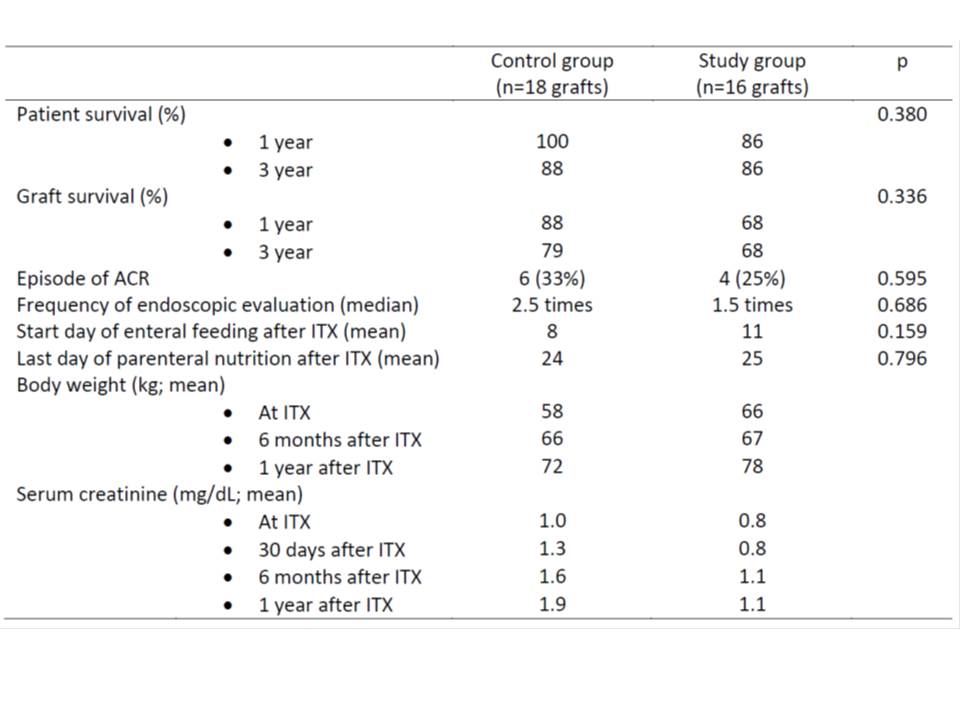Introduction: Our recent data suggests that protocol-driven, routine surveillance endoscopy and biopsy in the absence of clinical features of allograft dysfunction, does not appear to confer any survival advantage to patients and grafts. This observation called into question the necessity of stoma creation in all intestinal transplant (ITX) recipients. At our center, our practice evolved to ITX without stoma (ITX-NS) since 2015 initially in carefully selected patients. We report our preliminary clinical outcomes of ITX-NS.
Methods: Data analysis was limited to adult ITX without liver allograft between 2015 and 2018. There were 34 ITX which were divided into “Control group (with conventional stoma for surveillance)”, n=18 grafts in 16 patients and “Study group (ITX-NS)”, n=16 grafts in 15 patients. We compared clinical outcomes such as graft/patient survival, episode of acute rejection (ACR), frequency of endoscopic evaluation, initiation of enteral nutrition and duration of parenteral nutrition after ITX, body weight change, usage of anti-diarrheal medicines and renal function between the 2 groups.
Results: Clinical outcome was similar between the 2 groups as table 1. Dose of anti-diarrheal medicines at 30 days after ITX was significantly (p=0.034) lower in the study group. Fifty-six percent of patients in the control group needed maximal dose to control amount and consistency of stoma output. Whereas, 19% of study group needed maximal dose and 38% did not need any anti-diarrheal medicine.
Table 1. Comparison of clinical outcome between the 2 groups

Conclusion: ITX-NS appears to be a safe practice model without obvious adverse impact on outcome compared to standard intestinal transplantation with stoma for the purpose of surveillance endoscopy and biopsy. There is theoretical benefit such as better fluid and electrolyte balance, sparing renal function, better abdominal wound care and patient satisfaction. As of now our center’s policy is not to create stoma after ITX except in patients deemed to be at high risk to develop ACR (loop ileostomy) or in patients who do not have distal colon for anastomosis (creating end colostomy). Longer-term follow up with more cases will help confirm safety and benefit of such an approach.
.jpg )